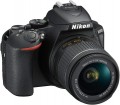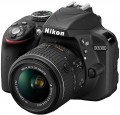DxOMark rating
The result shown by the camera in the DxOMark ranking.
DxOMark is one of the most popular and respected resources for expert camera testing. According to the test results, the camera receives a certain number of points; The more points, the higher the final score.
Light sensitivity (ISO)
The sensitivity range of a digital camera matrix. In digital photography, light sensitivity is expressed in the same ISO units as in film photography; however, unlike film, the light sensitivity of the sensor in a digital camera can be changed, which gives you more options for adjusting shooting parameters. High maximum light sensitivity is important if you have to use a lens with a low aperture (see Aperture), as well as when shooting dimly lit scenes and fast-moving objects; in the latter case, high ISO allows you to use low shutter speeds, which minimizes image blur. However, note that with an increase in the value of the applied ISO, the level of noise in the resulting images also increases.
Frames per series (JPEG)
The highest number of shots a camera can capture “in one go” in JPEG continuous shooting.
The technical features of modern digital cameras are such that during continuous shooting, photos have to be recorded in a special buffer, and only then, after the end of the series, they can be copied to a memory card. This buffer has a limited size, so the number of frames in one series is also limited. At the same time, we note that this indicator is usually indicated for shooting at the highest possible resolution (see "Maximum image size"); at lower resolutions, the volume of each image is reduced, and the number of frames in the series may turn out to be more than stated in the specifications.
JPEG, the most popular digital photography format today, is smaller and requires less processing power than RAW (see "Recording in RAW Format"). Therefore, in a JPEG series, as a rule, more frames are available to the photographer. However, in some models that have two separate buffers (for RAW and JPEG), it may be the other way around.
Frames per series (RAW)
The highest number of shots the camera can capture “in one shot” when shooting in RAW format continuously (see “Recording in RAW Format”).
The technical features of modern digital cameras are such that during continuous shooting, photos have to be recorded in a special buffer, and only then, after the end of the series, they can be transferred to a memory card. This buffer has a limited size, so the number of frames in one series is also limited. At the same time, we note that this indicator is usually indicated for shooting at the highest possible resolution (see "Maximum image size"); at lower resolutions, the volume of each image is reduced, and the number of frames in the series may be more than stated in the specifications.
RAW images take up more space and require more processing power than "finished" JPEGs. Therefore, the number of frames in a series of this format is usually lower than that of JPEG. However, there are exceptions — usually these are cameras that have two separate buffers (for RAW and JPEG).
Frames per series (JPEG RAW)
The highest number of frames a camera can capture “in one go” in continuous shooting mode, where the same frame is saved in both JPEG and RAW format at the same time (see “Recording in RAW Format”).
The technical features of modern digital cameras are such that during continuous shooting, photos have to be recorded in a special buffer, and only then, after the end of the series, they can be copied to a memory card. This buffer has a limited size, so the number of frames in one series is also limited. At the same time, we note that this indicator is usually indicated for shooting at the highest possible resolution (see "Maximum image size"); at lower resolutions, the volume of each image is reduced, and the number of frames in the series may turn out to be more than stated in the specifications.
Shooting JPEG and RAW at the same time requires a lot of resources, and the materials themselves take up a lot of space. Therefore, the possibility of such shooting itself is available mainly in premium cameras, and the number of frames in a JPEG RAW series is usually less (at best, the same) than in any of these formats separately.
HDR
Camera support for
HDR.
HDR stands for High Dynamic Range. The main application of this technology is shooting scenes with significant differences in illumination, when there are both very bright and very dark areas in the frame. The features of modern digital photography are such that in the normal shooting mode, only a rather narrow range of brightness can be correctly processed; as a result, with a large difference in illumination, the image contains either too dark or overexposed fragments. HDR avoids this phenomenon: in this mode, the camera takes several shots with different exposure settings, and then glues them together in such a way as to reduce the brightness in bright places and increase in dark places. This allows you to shoot, for example, landscapes against the backdrop of a bright sunset sky, the interiors of dimly lit buildings with bright windows, etc. In addition, HDR can also be used as an artistic technique — to give the picture an unusual colour scheme.
Note that this effect can also be achieved using post-processing in a graphics editor; however, using the camera is much more convenient.
Exposure compensation
The ability to manually (or automatically, according to predetermined parameters) change the exposure parameters during shooting, that is, the amount of light falling on the matrix. It is used when the automatically selected exposure parameters do not give a satisfactory result — for example, in difficult conditions, when the illumination of the main subject and the background is very different. The camera's exposure compensation capabilities are recorded in the format "± x EV, in y EV increments", such as "± 3 EV, in 1/2 EV increments". The first digit indicates the maximum amount by which the exposure can be changed from the original value by the compensation process; the second is the step (step) with which the change occurs. EV is a specific unit of measure for exposure; a 1 EV change in exposure means a 2x change in the amount of light hitting the sensor. An increase in EV indicates an increase in the amount of light due to opening the aperture or an increase in shutter speed, a decrease indicates the opposite. All modern cameras with exposure compensation function are capable of producing it “in both directions”.
Auto bracketing
Bracketing is called shooting a series of frames, in which in each next frame the shooting parameters (exposure, white balance, focus, etc.) change by a certain amount. This allows, for example, to choose the most successful shot from several options, or to determine the effect of changing the settings in one direction or another. Auto bracketing allows you to take such shots automatically. At the same time, it should be taken into account that the set of parameters changed in the process may differ in different camera models. For example, some devices are able to change only the exposure, others — the exposure and/or white balance, etc.
File recording formats
File formats in which the camera can record video. Given that the footage is designed to be viewed on an external screen, you should make sure that the playback device (DVD player, media centre, etc.) is able to work with the appropriate formats. At the same time, many camera models themselves can play the role of a player by connecting to a TV via an audio / video output or HDMI (see the corresponding paragraphs of the glossary). And if the video materials are to be viewed on a computer, you should not pay special attention to this parameter at all: problems with format incompatibility in such cases rarely occur, but are usually solved by installing the appropriate codec.

